
BOTOX® Cosmetic
Temporarily Minimize the Appearance of Dynamic Wrinkles and More With Expert BOTOX® Injectors in Denver
The most common cosmetic dermatology treatment sought by both women and men throughout the United States is BOTOX®. Denver’s AboutSkin Dermatology team is surely the most experienced office in the Rocky Mountains region and one of the top in the country. In fact, only a handful of people in the world are as internationally well known for BOTOX® (and injectables, as well as lasers), with Dr. Joel Cohen having authored three textbooks and more than 262 articles, in addition to lecturing all over the world many times a year (prior to COVID). Not only did Dr. Cohen write a 400-page textbook (the largest to date on this topic) on BOTOX® and related treatments (known as neuromodulators), but he is internationally known and respected for his publications, and he teaches and lectures throughout the world on this subject. Dr. Cohen actually studied and participated in clinical trials during his one-year fellowship with the husband and wife credited with discovering the cosmetic use of BOTOX®, dermatologist Alastair Carruthers and ophthalmologist Jean Carruthers.
Book Your ConsultationBOTOX® by Experienced Board-Certified Dermatologists
BOTOX® may be a household name, and surely commoditized in hair salons and spas, but it is still important to choose the right person to inject it. Choosing a highly experienced, Board-Certified Dermatologists is paramount for anyone who wants to get skin-smoothing results while maximizing safety. The physicians at AboutSkin are ALL Board-Certified Dermatologists and have experience, training, and knowhow. Aesthetics are not a part time “side-gig” for us—we are well-trained on these procedures, are tested on their nuances in residency and as part of our rigorous board certification, and we actually perform these treatments every day in our offices. We store these products properly, and according to the guidelines.
Book Your Consultation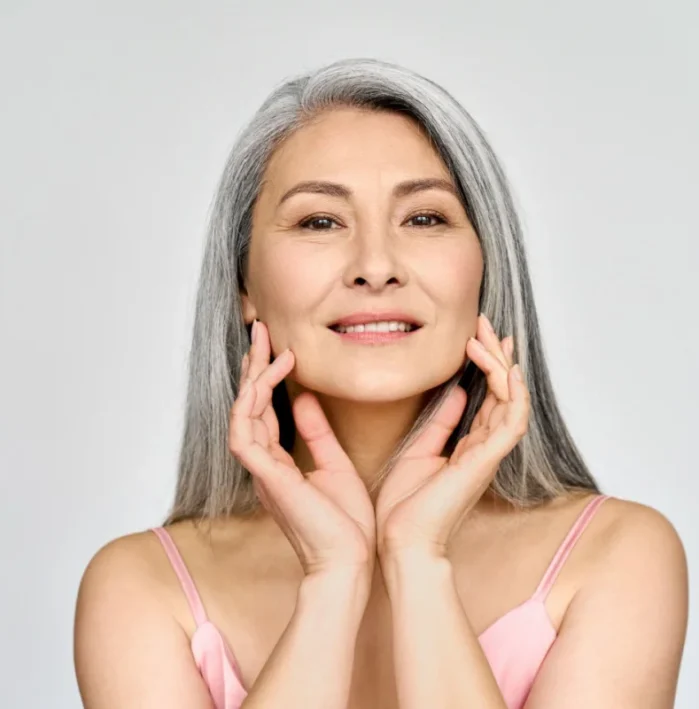
What Does BOTOX® Treat?
Botox Cosmetic is designed to address the lines known as “dynamic wrinkles” — since the word “dynamic” refers to something marked by constant activity. This is in contrast to “static wrinkles,” which are not associated with movement and are visible at rest. A single injection session of Botox is enough to make the targeted muscles pulling on the skin less visible and less imprinted for months at a time.
Specifically, the USFDA has approved BOTOX® for the treatment of:
- glabellar lines (“frown lines” or “11s” between the eyebrows)
- lateral canthal lines (“crow’s feet” between the eyes and temple)
- horizontal forehead lines (Dr. Cohen did the FDA trial for this)
- excessive underarm sweating
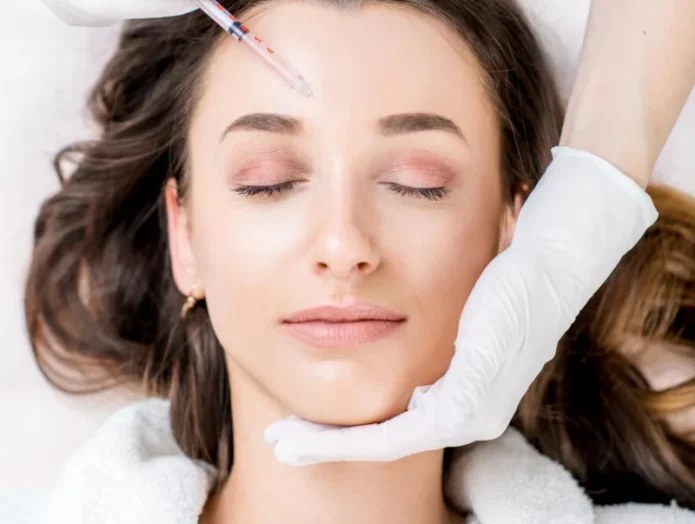
Other safe and established uses of BOTOX®:
Routine Botox applications by experienced physicians have led to the development of many other safe and established uses (on which Dr. Cohen has lectured and published extensively), including:
- Lifting the eyebrows
- Softening nasal “bunny lines”
- Reducing chin dimpling
- Smoothing lines around the lips and mouth
- Softening platysmal bands in the neck
- Minimizing excessive sweating in other areas (palms, soles, forehead/scalp)
At Denver’s AboutSkin Dermatology, we use Botox to address a range of cosmetic concerns on the face, including horizontal forehead lines, glabellar lines (known as “11s” or frown lines between the brows), crow’s feet next to the eyes, bunny lines beside the nose and vertical lip lines above the mouth.
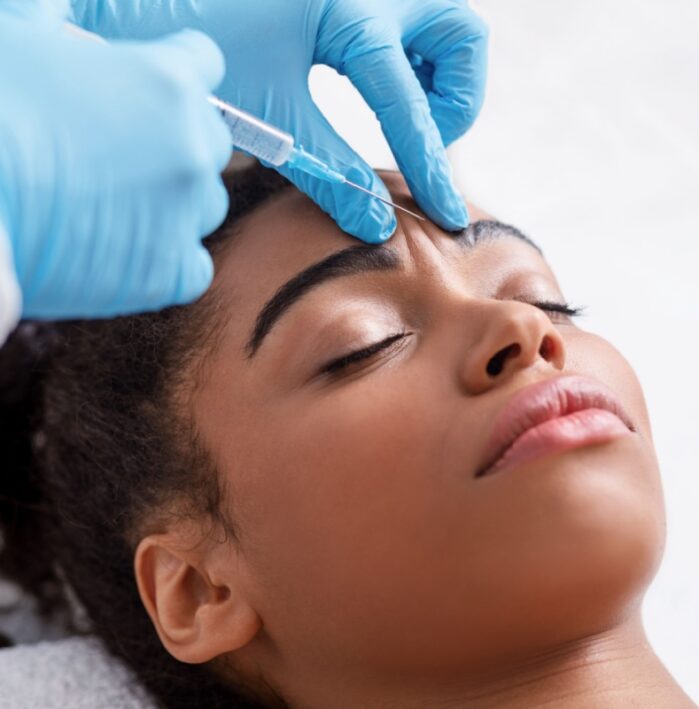
How Does BOTOX® Cosmetic Work?
Muscles contract when they receive a signal to do so via a specialized cell known as a neuron. BOTOX® blocks contractions in wrinkle-forming muscles by disrupting this typical flow of neuron-signaling. BOTOX® has a similar effect on blocking glands, such as those that produce sweat (especially in the underarm area). This is why BOTOX® is known as a “neuromodulator.”
The key ingredient in BOTOX® is a purified form of botulinum protein. Once injected into a targeted muscle, it works to suppress contractions for months at a time. Because neuromodulators are such effective blockers of muscle activity, injectors must be thoroughly trained in their proper handling, use, and regions of delivery. Dr. Cohen, as well as our team of Board-Certified Dermatologists, are all very well trained in all of these aspects of injecting BOTOX®. At our offices, only doctors inject BOTOX®.
While it is possible for a wide range of people to meet the minimum requirements to perform aesthetic treatments in some more lax states in the United States, Board-Certified Dermatologists are uniquely qualified to administer BOTOX® and a full spectrum of aesthetic procedures. Again, a dermatologist that Dr. Cohen trained with for a year is one of the pioneers. This is due to their rigorous medical school and residency education, their intense study of the skin, their understanding of skin’s relationship to other systems, and their extensive board exam testing on these procedures.
Book Your ConsultationWho Is an Ideal Candidate for BOTOX®?
Generally, any adult patient who is physically healthy, is not pregnant or breastfeeding, has moderate to severe facial wrinkles caused by muscle contractions, and doesn’t have allergies to the ingredients in Botox could be an ideal candidate. More and more commonly, patients start in their 20s and 30s for “pre-juvenation” to minimize the imprinting of lines in the first place.
One of our Board-Certified Dermatologists can assess you personally and determine whether Botox would help you achieve the results you are seeking and whether the treatment is suitable for your specific situation.
Book Your Consultation
What to Expect During Your BOTOX® Consultation
All patients who desire Botox Cosmetic treatment will be seen by a Board-Certified Dermatologist at AboutSkin Dermatology and Aesthetics. This allows the patient to describe his or her desired aesthetic goals. It also gives the injector an opportunity to determine the suitability of the treatment, as well as other aesthetic procedures of interest, and explain what to expect. Many people have questions about the length of treatment as well as the cost. Botox side effects and other rare potential post-treatment issues are also common topics of these discussions with your injector. Again, Dr. Cohen wrote, as lead author, a 400-page book on all of this related to Botox, giving him and his team unique insight and the ability to help patients be fully informed about these details.
This thorough consultation process ensures that each patient receives a tailored treatment plan that aligns with their expectations and aesthetic aspirations, providing clarity and confidence as they proceed with their cosmetic enhancements.
What Is the BOTOX® Injection Process?
The Botox injection session itself does not last long. The treatment is administered with great care, with precision positioning of each tiny-needle injection. Many patients describe the sensation of Botox injections as a quick, minor pinch or sting. The slight pain can often be minimized by pre-treatment with ice or topical anesthetic applied before your appointment. That said, customized results still take only a matter of minutes.
Because a treatment session with Botox alone doesn’t take more than several minutes, people dub it a “lunchtime procedure.” This swift and efficient process allows patients to return to their daily activities immediately, with no downtime required. It’s an ideal solution for busy individuals seeking effective anti-aging treatments without interrupting their schedules.
Preparing for BOTOX®
Although BOTOX® doesn’t require much preparation, be sure to talk to your injector during your consultation about all the medications and supplements you’re currently taking. You might want to adjust how you’re taking some over-the-counter products, such as aspirin, Ibuprofen, etc., as they are blood thinners. They can increase the risk of bruising and bleeding from injections. To optimize healing, avoid smoking and alcohol for a few days prior to treatment.
Please note that any changes to prescribed prescription medications should be discussed with a primary care physician or similar professional prior to altering any doses or schedules. Maintaining your health is of primary importance.
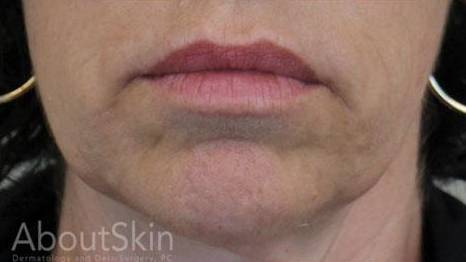
Before
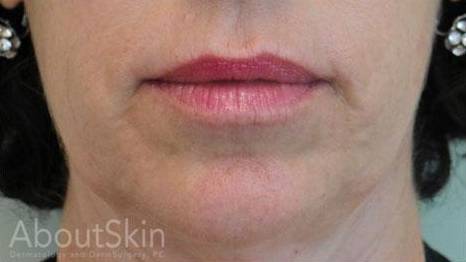
After
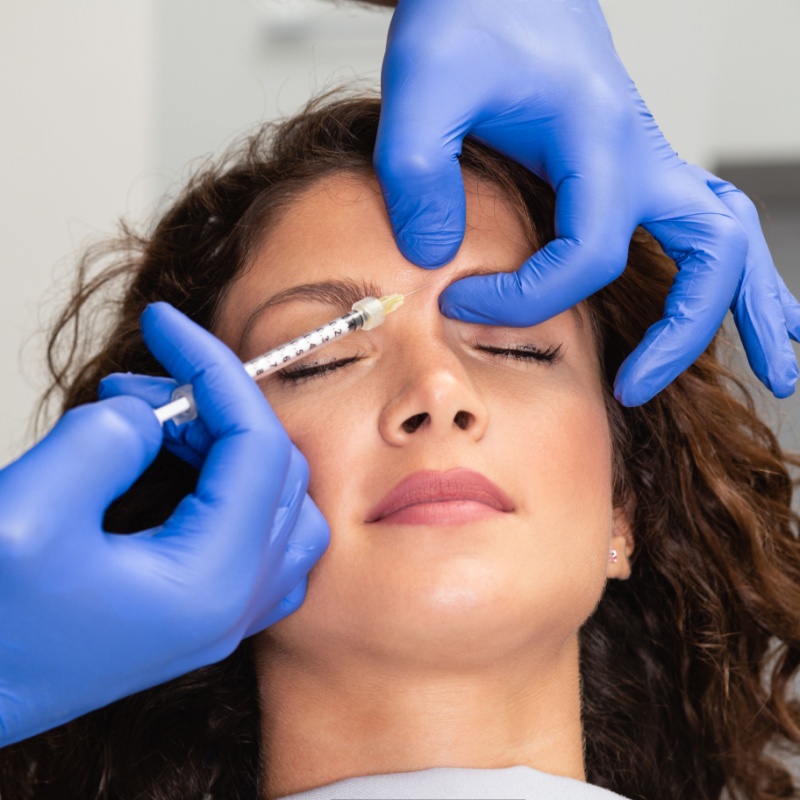
What Can You Expect During BOTOX® Recovery?
Initial BOTOX® Side Effects
Because each tiny-needle stick feels like a slight pinch, patients can expect the treated area to sometimes be slightly tender shortly after their session, with the possibility of bruising, redness and swelling. These Botox side effects and post-injection issues are typically very mild and temporary.
BOTOX® Downtime
Some of the most appealing aspects of this treatment are that it is fast and there’s no recovery time needed after injections. You can go back to your routine right away, but try to relax for the rest of the day after your treatment. Don’t engage in heavy exercise that increases blood flow to the injection site for a day or two, as this can potentially increase bruising and swelling. Also, avoid placing too much pressure on your face the day of treatment by massaging it or having a face-down massage, as this can cause the injectable to potentially migrate to an adjacent undesired muscle and lead to less optimal results.
What Results Can You Expect From BOTOX®?
Each individual Botox patient experiences unique results, which depend on the prominence of their musculature, the dose used to treat them and their aesthetic goals. Your skin will generally look smoother, younger and more refreshed after Botox, but if desired, you’ll often still be able to move your face and make expressions. Botox works more on the muscle than resting lines (which are caused by the muscle contractions over time).

How Soon Will I See My BOTOX® Results?
The results of a Botox treatment do not appear right away, as it takes some time for the medication to take effect. Patients should start to see the results of their Botox injections within three to four days as the facial muscles and nerves respond to the active ingredient. However, more noticeable results peak 10 to 12 days later.
How Long Does BOTOX® Last?
Your smoother-looking skin can be expected to last for roughly three to four months (but some results are often visible for up to six months). The average lifespan and efficacy of Botox depends on a number of factors, including the age of the patient, the elasticity of their skin and the severity of the wrinkles. In FDA studies, some patients’ results lasted longer and some patients’ results lasted shorter than the average duration of three to four months.
Can I Get BOTOX® Treatments Regularly?
As the neuromodulator effects begin to wear off and muscle activity resumes, patients can schedule a new Botox treatment session. Patients can go back for additional Botox treatments roughly every three months if they so choose.
FAQs
Frequently Asked Questions About BOTOX®
Why Is It Important to Choose a Qualified Board-Certified Dermatologist for BOTOX® Injections?
Because neuromodulators are such effective blockers of muscle activity, injectors must be thoroughly trained in their proper handling, use and regions of delivery. Dr. Cohen and our team of Board-Certified Dermatologists are all very well-trained in all of these aspects of injecting Botox. At our offices, only doctors inject Botox.
While it is possible for a wide range of people to meet the minimum requirements to perform aesthetic treatments in some more lax states in the United States, Board-Certified Dermatologists are uniquely qualified to administer Botox and a full spectrum of aesthetic procedures. This is due to their rigorous medical school and residency education, their intense study of the skin, their understanding of skin’s relationship to other systems and their extensive board exam testing on these procedures.
Again, a dermatologist that Dr. Cohen trained with for a year is one of the pioneers of Botox, making Dr. Cohen and his team uniquely experienced in the nuances of this treatment.
What Causes Wrinkles?
Skin is a living organ that changes over time. As skin ages, some structures and structural support are lost through chronologic aging factors as well as environmental exposures (like sun, smoke and other pollutants). When people get into their 20s, 30s and beyond, loss of collagen, elastin and hyaluronic acid makes the skin less resilient. By this time, the facial muscles responsible for expression have pulled on the overlying skin so many times that it has caused lines to imprint in the skin.
Folds and creases gradually begin to appear, and these grow more prominent with each muscle contraction. Over time, the wrinkles become more and more reinforced and, thus, pronounced, and then are often visible when the skin is at rest.
When Should I Start BOTOX® Injections?
The decision to start Botox treatments can be proactive, focusing on prevention rather than correction. This concept, known as “pre-juvenation,” suggests beginning treatments early, often in a person’s 20s, before expression lines become permanently etched into the skin. The rationale behind this approach is rooted in the mechanics of how Botox works and the natural aging process of the skin.
The Science of Pre-juvenation
Botox functions by blocking nerve signals that cause muscles to contract. Repeated muscle contractions over years contribute to the formation of expression lines, such as forehead lines, crow’s feet and frown lines. By inhibiting these contractions, Botox can effectively delay the onset of wrinkles — those visible even when the face is at rest.
The Benefits of Early Intervention
Starting BOTOX® treatments early has several advantages:
- Prevents the Formation of Deep Wrinkles: Regular use of Botox in your 20s and 30s can prevent the development of deep lines that are more difficult to treat later.
- Reduces the Need for More Invasive Procedures: By maintaining a youthful appearance with Botox, individuals may delay or avoid the need for more invasive anti-aging treatments.
- Cultivates Long-Term Skin Care Habits: Early users of Botox often become more aware of their skin health, leading to better overall skincare habits.
What Can You Do to Maintain BOTOX® Results?
Generally, since Botox is a treatment that provides temporary results, patients will need to come back for additional treatments if they like their results and want to maintain their more youthful look long-term. However, there are things you can do to prevent Botox from wearing off too quickly — as well as prevent new wrinkles from developing.
A Healthy Skincare Regimen
A good, daily skincare routine can potentially extend the lifespan of injections between your appointments and will contribute to efforts to delay the effects of aging. Ask our AboutSkin doctors or aesthetic team members about skincare based on scientific data and clinical trials (which, in many cases, our AboutSkin research team participated in under the direction of Dr. Cohen, with the results published).
Simply cleansing your skin to remove toxins, dead cells, dirt and residual makeup is the first step. If you have had injections, hydration will be especially important for maintaining results, so be sure to moisturize and drink plenty of water. Moisturizing helps to keep your skin plump and hides any fine lines that aren’t smoothed by Botox. Additionally, you can use antioxidant-rich products to help undo existing damage and ward off additional harm from free radicals, as well as choose collagen-boosting products to strengthen the skin.
Sun Protection
One of the most important things you can do to fend off wrinkles is apply broad-spectrum sunscreen with an SPF of 30 or more on your face each day, even if the weather is overcast or it’s wintertime. Zinc and titanium oxide are the most effective “broad-spectrum” ingredients, and many formulations that we carry at AboutSkin rub in well and can be very cosmetically elegant.
Limit sun exposure and wear protective clothing like sunglasses when you go out. Reapply sunscreen every two hours at minimum. UV rays from sunlight are highly damaging to the skin cells, and extensive, unprotected exposure will cause wrinkles, rough patches and hyperpigmentation to form on your skin.
Don’t Smoke
If you want to preserve smooth skin, avoid smoking because the toxins in cigarettes and other nicotine products can accelerate skin aging.
Don’t Stress
Using relaxation techniques will not only help to improve other skin issues but can also make Botox last longer, as stress causes us to use our facial muscles to frown and scowl more.
How Does BOTOX® Impact Facial Expressions and Muscle Movement in the Long Run?
Botox temporarily paralyzes the muscles where it is injected, which can reduce the formation of wrinkles caused by expressions. When administered correctly by experienced professionals, Botox should not significantly impact the ability to make natural facial expressions. The goal is to soften expression lines, not eliminate the ability to express emotions.
Over time, regular use of Botox can lead to a decrease in the overall severity of facial wrinkles. Patients often find that they look more rested and less “angry” or “tired” as a result. Importantly, with continued regular use, the results of Botox treatments can gradually last longer. This extended duration effect is thought to be due to the muscles becoming trained to relax, reducing their habitual contracting actions that contribute to wrinkle formation. As these muscles remain relaxed over longer periods, the intervals between treatments can potentially increase, providing a sustained youthful appearance with less frequent need for re-treatment.
Regular consultations and following a tailored treatment plan can help maintain natural facial expressions while enjoying the anti-aging benefits of Botox.
Can I Combine BOTOX® With Other Injectable Treatments?
While Botox relaxes facial muscles that imprint wrinkles, women and men who want to address static wrinkles caused by a loss of volume can choose dermal fillers to volumize the skin. Again, we have performed clinical trials on many dermal filler products (like Restylane®, Juvederm®, Voluma® and Radiesse®). These injections are often combined with neuromodulators on the same day to address both dynamic and static wrinkles.
Can I Combine BOTOX® With Other Aesthetic Treatments?
Botox can indeed be combined with other cosmetic procedures, and doing so often enhances overall aesthetic outcomes. Combining Botox with treatments like chemical peels, microneedling or laser therapies can address multiple skin concerns simultaneously, leading to more comprehensive improvements in skin appearance and texture.
It is crucial to time these treatments properly to avoid overwhelming the skin and to maximize the benefits of each. Our Board-Certified Dermatologists can provide guidance on the best schedule for combining treatments based on your individual skin conditions and desired outcomes.
- Chemical Peels: Botox and chemical peels can work together to rejuvenate the skin. While Botox relaxes the muscles and smooths wrinkles, chemical peels improve skin tone and texture by removing the outer layers of aged or damaged skin, promoting regeneration and collagen production.
- Microneedling: This procedure can be paired with Botox to enhance skin firmness and reduce fine lines. Microneedling stimulates collagen production, and when used with Botox, the relaxation of muscles can allow for a more pronounced and lasting effect, particularly in areas with dynamic wrinkles.
- Laser and Light-Based Treatments: Laser and light devices focus on skin resurfacing and pigmentation issues and can be effectively combined with Botox to achieve a more youthful appearance. Botox addresses the underlying muscle activity that contributes to wrinkles, while laser treatments improve skin surface conditions.
Are There More Neuromodulator Options to Address Wrinkles?
Botox Cosmetic is the most popular cosmetic treatment globally, but it is not the only neuromodulator. AboutSkin Dermatology also offers other type-A botulinum brands — like Dysport® and Daxxify® — for relaxing the muscles responsible for dynamic wrinkles. The alternatives work very similarly to Botox, but there are a few differences in the way they are formulated, so some patients might have a preference for one type over another.
Dr. Cohen and our AboutSkin researchers performed the clinical trials on all of these products, and Dr. Cohen has performed trials on products in the potential pipeline of FDA studies (like Revance’s botulinum toxin injectable). He and his team can help determine which neuromodulator is right for you.
What Are the Differences Between BOTOX®, Dysport® and DAXXIFY®?
When considering neuromodulator treatments for cosmetic purposes, it’s essential to understand the distinctions between the available options. Each brand has unique characteristics in terms of onset time, duration of effect and specific uses, which can influence your choice based on your individual needs and goals.
Onset Time
- Botox: Typically, the effects of Botox begin to appear within three to four days after injection, with full results visible in about two weeks.
- Dysport: Dysport is often chosen for its slightly quicker onset, with patients sometimes noticing improvements as early as one to two days post-treatment, with full effects in about a week.
- Daxxify: Similar to Botox, Daxxify generally shows results within a few days, but it can take up to two weeks to see the complete effects.
Duration of Effect
- Botox: The results from Botox injections typically last three to four months, depending on the patient’s muscle activity and metabolism.
- Dysport: Similar to Botox, the effects of Dysport usually last for about three to four months. However, some patients report slightly shorter durations, depending on the area treated.
- Daxxify: Daxxify stands out for its longevity, with effects potentially lasting six months or longer, making it a favorable option for those seeking a longer duration between treatments.
Specific Uses
- Botox: Approved for use in treating forehead lines, crow’s feet and glabellar lines (“11s” between the eyebrows), Botox is versatile and widely used for both cosmetic and medical purposes, including treating excessive sweating and chronic migraines.
- Dysport: Dysport is specifically formulated to spread a bit further from the injection site, making it ideal for larger areas such as the forehead. It’s particularly effective for treating glabellar lines.
- Daxxify: Being the newest among the three, Daxxify is approved for treating frown lines. Its unique formulation and longer-lasting effects make it suitable for patients interested in less frequent treatments.
Dr. Cohen has performed many clinical trials on Botox as well as these other products over the years — and some patients prefer to continue treatment with the product they received during these clinical trials at our office. You and your doctor can make that decision together. No matter what your treatment specifics are, the goal will be the same: to safely give you a more youthful and relaxed face that looks natural.

Discover the Art of Precision With BOTOX® in Denver
At AboutSkin Dermatology and Aesthetics, we understand that the decision to begin Botox treatments is not just about enhancing your appearance — it’s about choosing a trusted partner in your journey toward a more youthful and vibrant self. Led by the internationally renowned Dr. Joel Cohen, our team brings a depth of knowledge, experience and precision that stands out in the field of cosmetic dermatology.
Dr. Cohen and his team of Board-Certified Dermatologists, known for their extensive work in neuromodulator clinical trials and major dermatological publications, are committed to providing personalized care that meets your aesthetic goals. We believe in a holistic approach to beauty, where every treatment is tailored to the unique contours and expressions of your face, ensuring natural-looking results that enhance and refresh your look.
Schedule your Botox consultation today and see how Dr. Cohen’s expertise and our cutting-edge techniques can help you achieve a smoother, more youthful appearance.
Book Your Consultation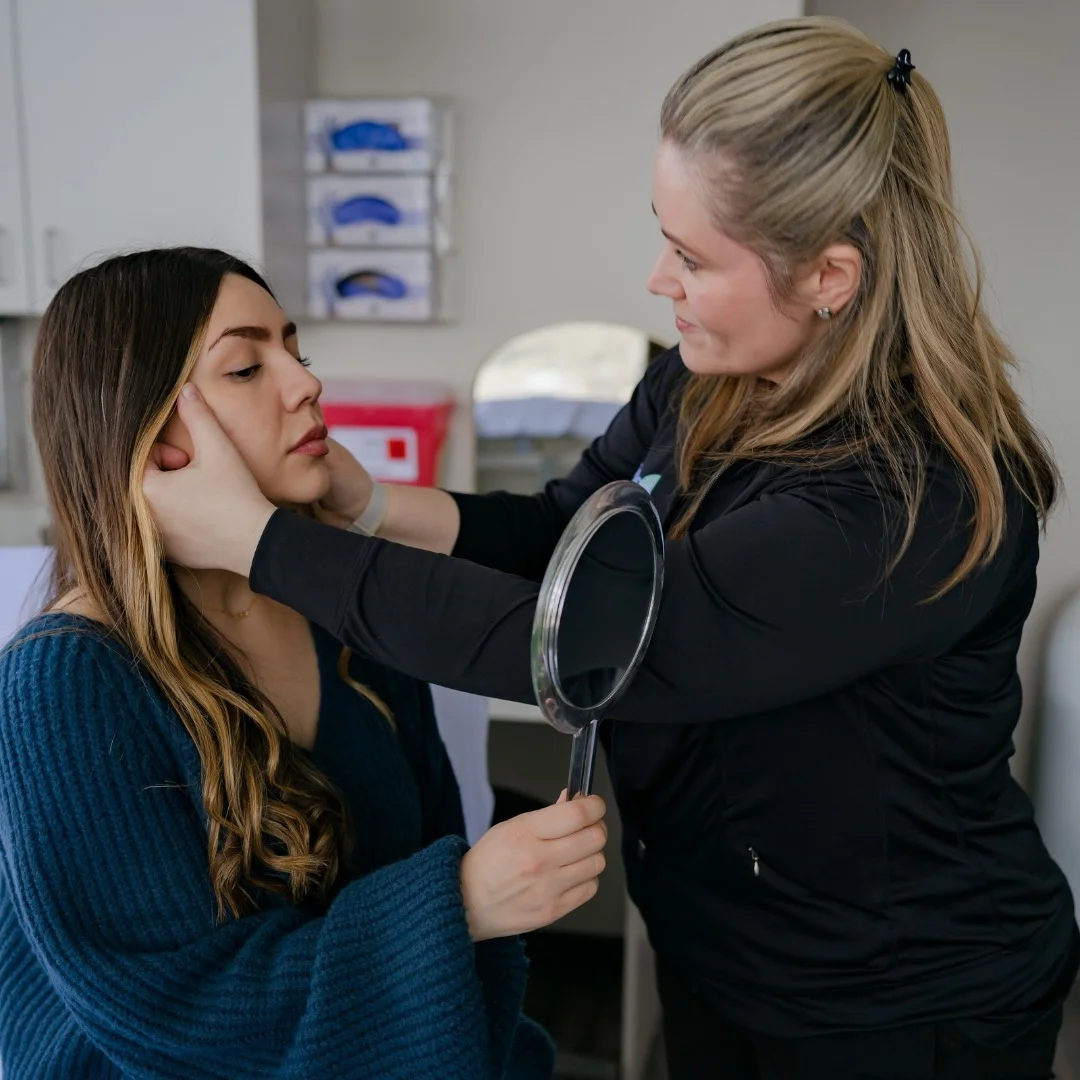
Patient Testimonials
Let Your Skin Glow
Let Your Skin Glow
Let Your Skin Glow
Let Your Skin Glow
Let Your Skin Glow
Tag us on Instagram @aboutskindermatology
Book Your Consultation Today
By clicking submit you consent for us to contact you by phone, text or email using to the data provided, even if the contact info is on a state or national DNC list. You also consent to our Privacy Policy and Terms of Service.
Greenwood Village Office
5340 South Quebec ST., STE. 300 (South Entrance)
Greenwood Village, CO 80111
Sky Ridge Medical Center
Closing effective Sept 1, 2024
10099 Ridgegate Parkway, Ste. 490 (Conifer Building)
Lone Tree, CO 80124
